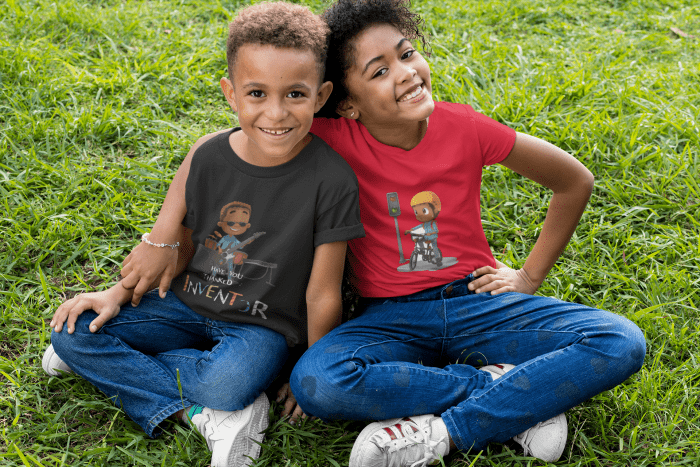
Social Emotional Learning: is it a Rebrand of Character Education?
https://patricemclaurin.com/wp-content/uploads/2020/01/BlogPic-1024x683.png 1024 683 pmclaurin pmclaurin https://secure.gravatar.com/avatar/14d9f9a6ef8e6cf4818ea0cf92291dd6bd51d25405d18dd5ba8c9a5f629ea1bb?s=96&d=mm&r=gOkay, I’ll admit it. When I initially heard the phrase “Social Emotional Learning”, I was a bit intimidated. I consider myself an educator by calling, not by trade, so when I became abreast of this recent trend in education, I thought to myself, surely I am going to need a doctorate to comprehend this. However, after doing my research, I concluded that Social Emotional Learning (SEL) is nothing more than applied character education, and I can truly dig that. For I am a firm believer in the wisdom of Bruce Lee who stated that, “it’s not enough to know, you must apply”.
But, since you’re not here to read about my favorite adages, allow me to share with you the basis of my conclusion, which is the definition of SEL provided by Collaborative for Academic, Social, and Emotional Learning (CASEL). It states that the SEL process simply helps “children and adults acquire and effectively apply the knowledge, attitudes, and skills necessary to understand and manage emotions, set and achieve positive goals, feel and show empathy for others, establish and maintain positive relationships, and make responsible decisions.” My interpretation of this definition is that the SEL process simply helps children and adults acquire and effectively apply the skills of self-awareness, goal setting, empathy and compassion, social-awareness and good choices/decision making; which are all core competencies of character education. Furthermore, when you compare the US Department of Education’s definition of character education (“a learning process that enables students and adults in a school community to understand, care about and act on core ethical values such as respect, justice, civic virtue and citizenship, and responsibility for self and others”), to the definition of Social Emotional Learning, the similarities are undeniable. Moreover, the tenets of social emotional learning are in definite alignment with those six pillars of character that we all know and love: Trustworthiness, Respect, Responsibility, Fairness, Caring and Citizenship. As such, it appears as if character education has encountered a major rebranding! And I don’t know about you, but boy do I adore a good rebrand!
And here’s another fun fact about me! Before establishing myself as a successful children’s book author of the acclaimed Thank an Inventor children’s book series, I was a Character Education Consultant for multiple school districts and I loved it! I loved it primarily because it afforded me an opportunity to provide scholars with practical information that would help them to maximize their full potential; information that every student could employ, for one didn’t have to be strong in academics to be strong in character! In fact, two of the greatest truths that I’ve ever heard, (I know, I know, here I go with my adages again), came from Dr. Martin Luther King, Jr. who stated that “Intelligence, plus character, is the goal of a true education.”, and Mr. Theodore Roosevelt, who stated that “To educate a person in mind and not in morals is to educate a menace to society.” It is worth noting, that both of these statements are paramount when considering a child’s education. For in reality, children can amass knowledge from some of the greatest educational institutions in the world, but if they lack empathy, if they lack compassion, if they lack respect for others, if they lack social awareness or social emotional learning, then there is a grand likelihood that they will misappropriate that knowledge and use it for eeevilll (envision the nefarious finger tap and villainous smirk here). As such, I have always been of the opinion, that when educating our youth, we should approach character education (now social emotional learning) with similar, if not with the same, intensity as we do general knowledge.
So, I’m excited about this rebrand! I’m excited about the implementation of Social Emotional Learning (SEL) into our children’s curriculum. And as opposed to engaging in a debate as to whether or not there is a significant difference between Character Education and SEL, I’ve opted to display how the tenets of the two overlap one another in such a way that, the proper application of either of them in the classroom, will help to increase the likelihood of students succeeding academically.
Listed below are a few ways that I believe character education and/or SEL can work to benefit students and help them to achieve academic success:
1. According to CASEL.org, teaching practices such as cooperative learning and project-based learning can help to promote SEL. Well, the same holds true for character education. We all know that when working in groups to complete assignments, students are expected to work together. As such, a certain synergetic skill set is required in order to achieve that goal. Emphasizing the application of the character pillars fairness, responsibility and respect can help students when working together collectively. For example, through utilization of these pillars, group leaders can ensure that all students adequately contribute by fairly allocating responsibility to each student. Additionally, everyone’s opinion and contribution will be respected, thereby fostering pride on everyone’s behalf in the finished project. Can you say “establish and maintain positive relationships” SEL?
2. Part of the definition of SEL is that children and adults acquire and effectively apply the knowledge, attitudes, and skills necessary to…make responsible decisions.” Well, instilling not only the importance of making good choices, but also the impact of the consequences thereof, will definitely assist students in achieving this goal. An example may be using the power of choice to help students to understand the significance of completing assignments. It is an unfortunate fact that students who don’t complete homework or class work assignments are most often the ones who struggle academically. Highlighting responsible decision making, particularly from a perspective of empowerment, can help students to hold themselves accountable for the decisions that they make. THEY get to CHOOSE whether or not they complete their assignments, thereby CONTROLLING their academic standing. That’s powerful. And there’s something very invigorating that happens when you tap into that power; realizing that you’re in control of your destiny, and that you exercise that control via the choices that you make. It should additionally be noted that the application of good decision making/making good choices might also dramatically decrease behavior issues as well. Again, empowering students with the knowledge that they CHOOSE how they behave can be magical!
3. I think it goes without saying that an emphasis on the character pillar of respect, particularly for oneself, can be beneficial to both the student and the teacher. Students who respect themselves enough to value their education will quite often translate that into a genuine respect for the teacher that is educating them. Furthermore, self-respect is a grand progenitor of the SEL tenet of empathy. When you lack self-respect, your likelihood of respecting others is slim. And if you don’t respect others, how can you have empathy and/or compassion for them?
4. Self-reflection and Self-control are essential components of character education. Reflecting on one’s own behavior allows for the opportunity to determine what you did right and/or what you could have done differently to gain a desired result. Furthermore, it is a fact of life that you are the only person, on this entire earth, that you can control. When considered in terms of SEL, students can use these tools to better determine how to “understand and manage their emotions”. Being reflective helps students to be honest about how they’re feeling and/or the actions that they’re taking, and self-control and personal responsibility encourages them to take accountability for themselves. In the classroom, this may translate into students actually asking for the assistance needed to maximize their full potential as opposed to acting out in class because they’re disappointed in, and/or angered by, their lack of understanding of the subject matter.
5. Lastly, there is perseverance and resilience. These are character traits that are sure to help students attain academic success. Completing a long, drawn out math problem, studying extra hard after failing a test to do better next time, finding time to get homework done after extracurricular activities, all of these things are achieved due to perseverance and resilience. Having the ability to take a loss then bounce back, or work through a tedious process until the finish, will make for an awesome student academically. In terms of SEL, perseverance and resilience will definitely help students to achieve the positive goals that they set for themselves.
In short, social emotional learning and/or character education are both necessary tools when attempting to create a well rounded individual. I believe that a student’s personal value system, which is based upon their personal character, will definitely help to determine what type of student they become. Contextually speaking, a student may not need to remember the steps of an algebraic equation in life, but they will undoubtedly need to know how to be a decent human being. Fortunately, whether you’re practicing character education or social emotional learning in your classroom, if applied effectively, both can and will help students to achieve this goal.



Mama Onile
I TOTALLY agree especially since rebranding is “that thing” we are doing in this day and age of BRANDS…packed and sell and while we are sleep unpack, rewrap on new and pretty and resell…ACTUALLY ISNT THAT WHAT “FOLKS” been doing since they branded our people…Ooops another topic for another time…I digress.
Back on track…for example when we were younger the buzz words were diversity and affirmative action now we have cultural and inclusion. Also, back in the day there was redlining, exclusion and NOW we have gentrification. I think a word you used in your article was the OVERLAP which is very appropriate in all cases…because while one word holds the specific gravity and meaning bringing in one or more terms in a sense hits the same target but from another perspective…another angle and gives more light to shed on the specific issue at hand. Like a multifaceted prism, when light shines and hits the various sides and a myriad of colors come through.
So, for this topic specifically, I love that they (whoever the heck THEY are) went back to the drawing board (whether consciously or subconsciously) and redefined, enhance and made bolder…aka rebranded this because what it does seem to include more is the human side and emotional connection and responsibility to ones character. Right? To me SEL further brings out the ownership of what and how I feel, WHEN I do something in or out of character AND the effects of my response/action/even thought. I think it gives ownership and like stated above provides empathy for the things we say, do and feel.
As a mama and home/free/unschooling parent who works on instilling MA’AT and IWA PELE in our home knowing that the world is also cultivating these similar and ANCIENT tenants is good to know…because SEL and character development education, IMHO, is really MA’AT and IWA PELE…rebranded????????????. And we all know what they…whoever the heck THEY are???? has a history of doing with OUSTORY…BUT THAT’S ANOTHER STORY…LOL
THANK YOU FOR THIS HEAD FOOD!????????????